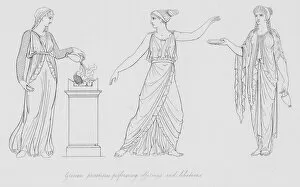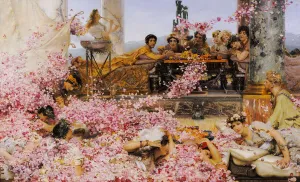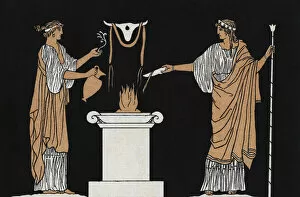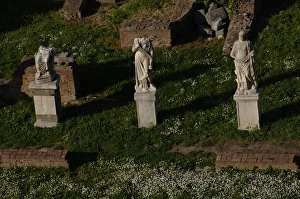Priestesses Collection
Priestesses, also known as Vestals, have long held a significant role in various cultures throughout history
All Professionally Made to Order for Quick Shipping
Priestesses, also known as Vestals, have long held a significant role in various cultures throughout history. From the Egyptian priests and priestesses depicted in Denon's engravings to the vibrant colors of Les Vestales lithograph, these women were revered for their spiritual devotion. Grecian priestesses performing offerings and libations, captured in an engraving, showcase their graceful movements and sacred rituals. In Medea Boiling the Ram illustration from Greek Vase Paintings by Harrison and MacColl, we witness the power of a priestess harnessing her abilities for mystical purposes. The Roses of Heliogabalus painting portrays a scene where they can surrounded by cascading petals, symbolizing their connection with nature and divine forces. Devotion is beautifully depicted through chromolitho artistry, showcasing the unwavering commitment of these women to their religious practices. German Priestesses following the Army engraving highlights how these devoted individuals would accompany soldiers into battle, offering prayers for protection and victory. The statuesque figures of Egyptian priests and priestesses showcased in Capitol engravings remind us of their enduring legacy within ancient civilizations. The Libyan Sibyl painting from the 16th century captures one such prophetess who possessed great wisdom and foresight. Arthur in Avalon depicts mythical tales where enchantresses played pivotal roles alongside knights on quests for honor and glory. Lastly, colored engravings depicting Priestesses of the goddess Vesta demonstrate not only their importance but also celebrate their beauty as they carry out sacred duties with grace. Throughout time, they have been guardians of tradition, mediators between mortals and deities; they embody spirituality itself. Their presence transcends mere mortal existence as they connect humanity with higher realms. These captivating images serve as reminders that behind every powerful civilization stood extraordinary women who dedicated themselves to serving divine causes - forever etching themselves into history's tapestry.
























